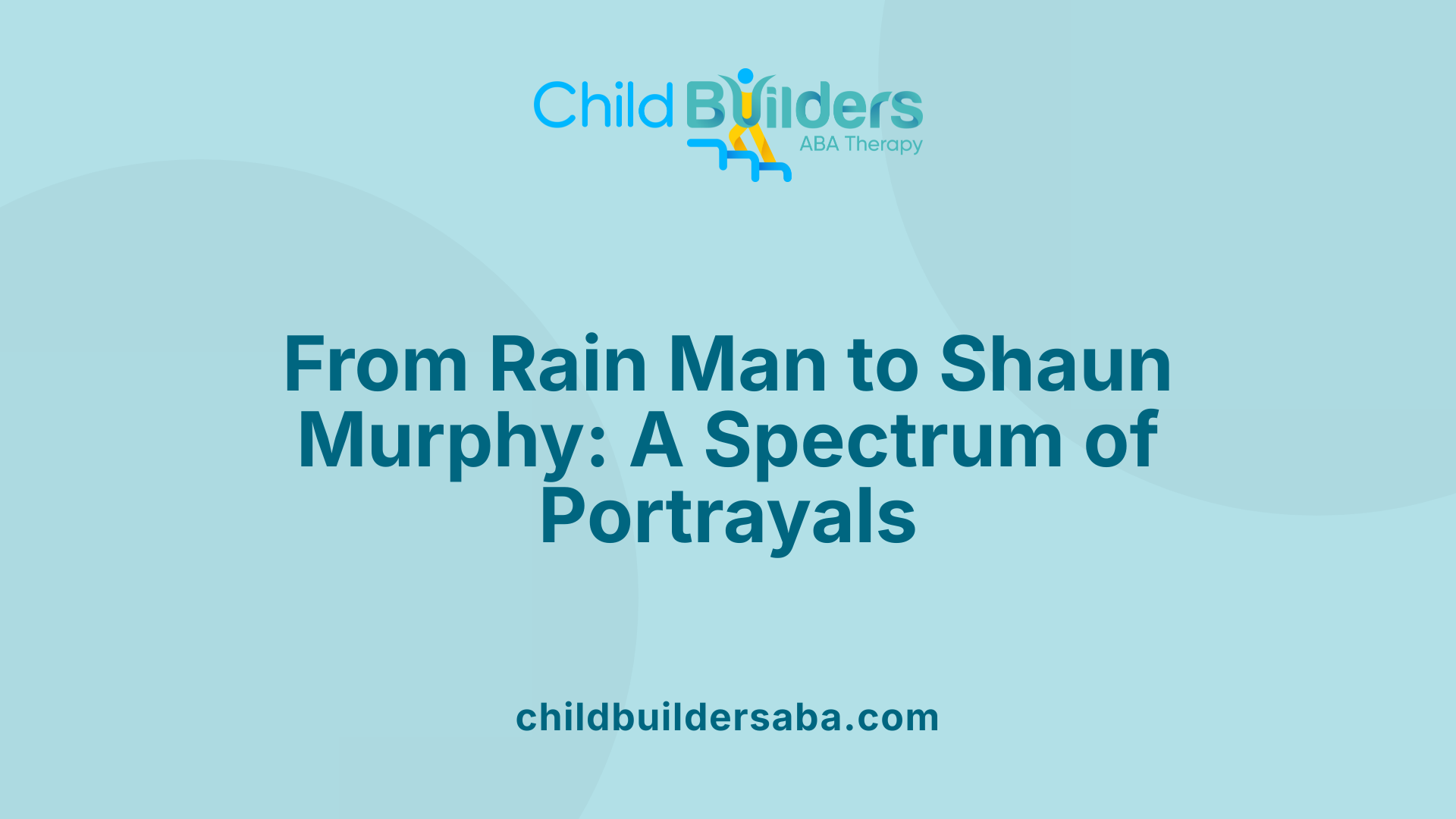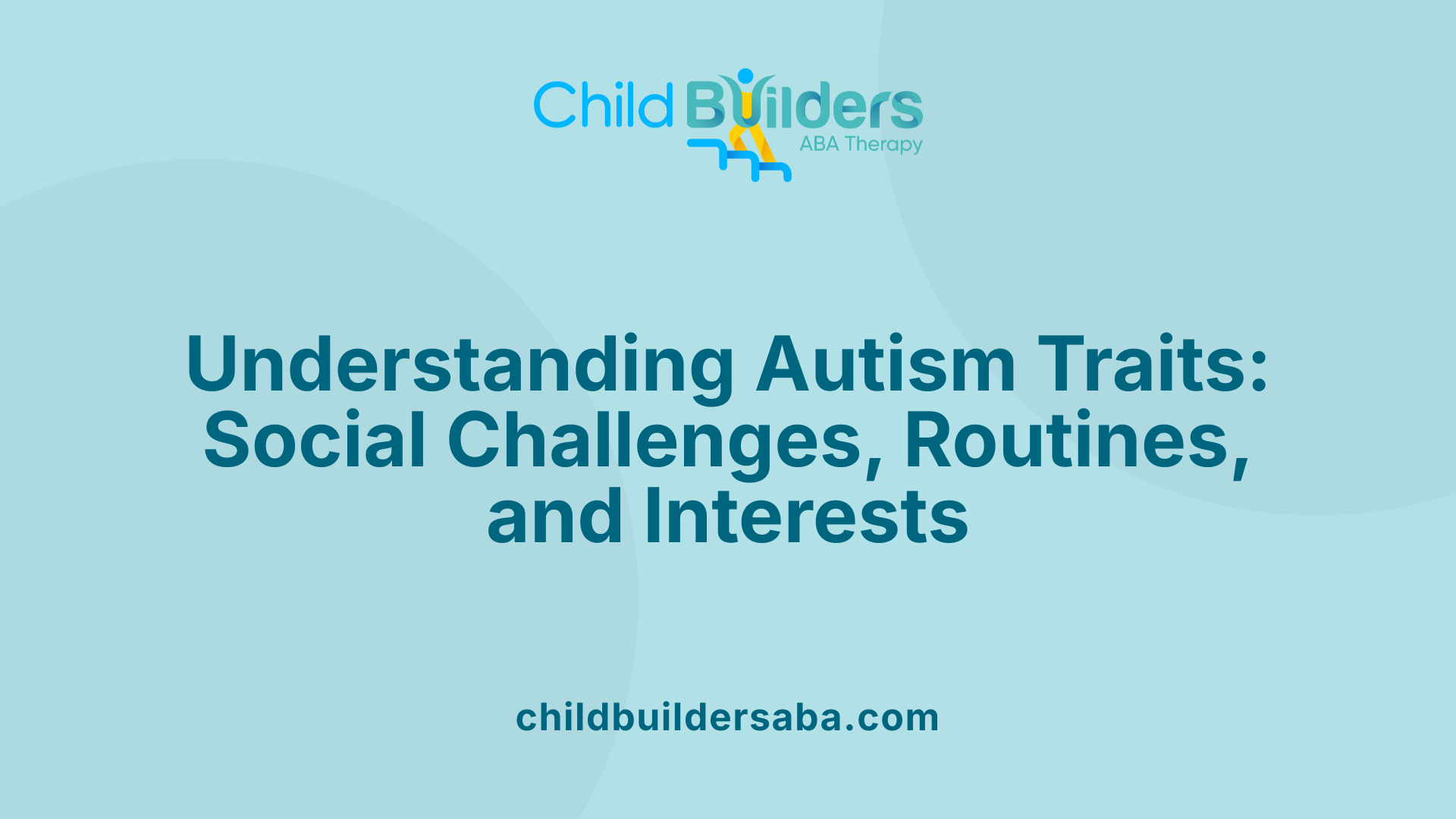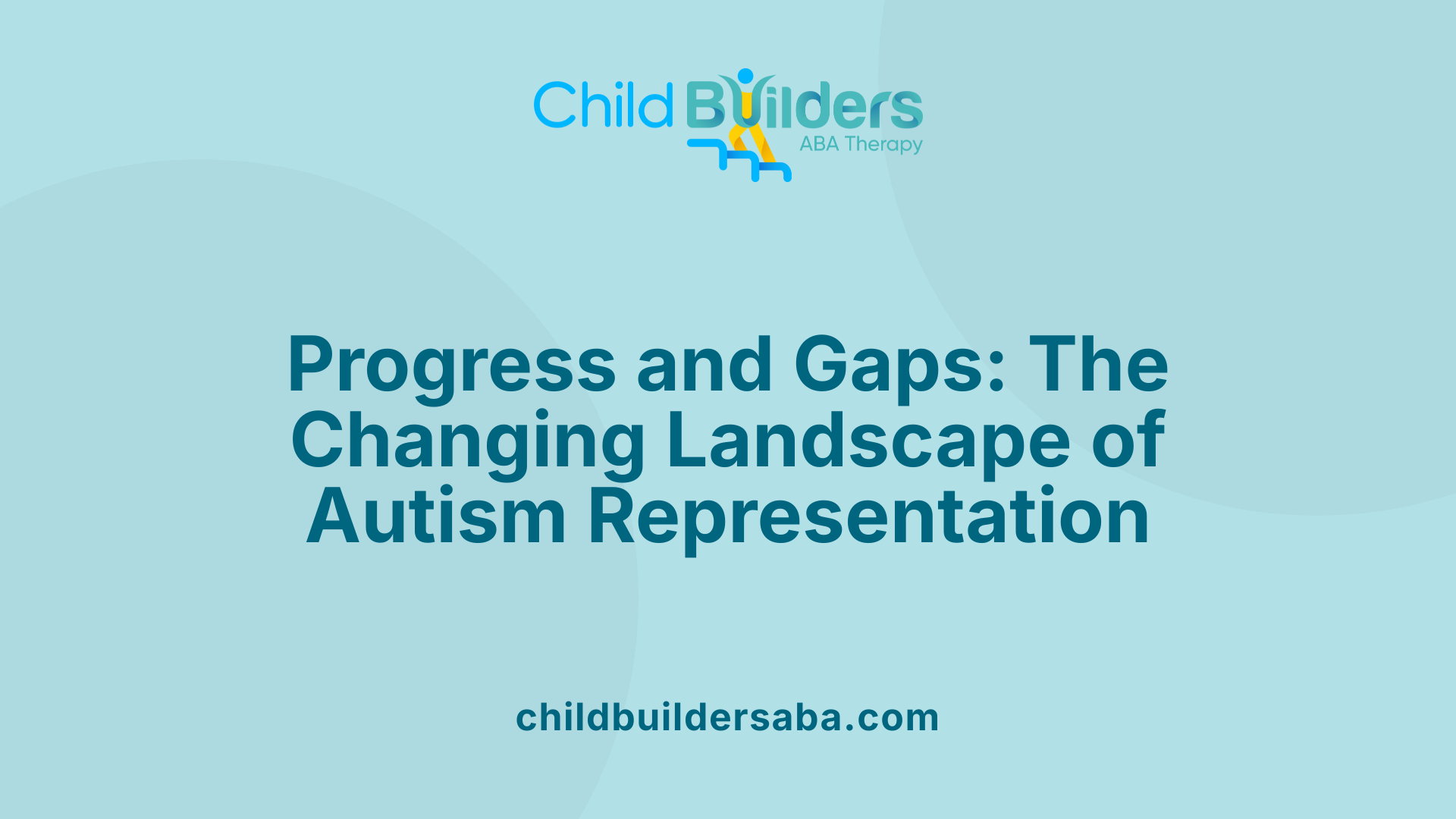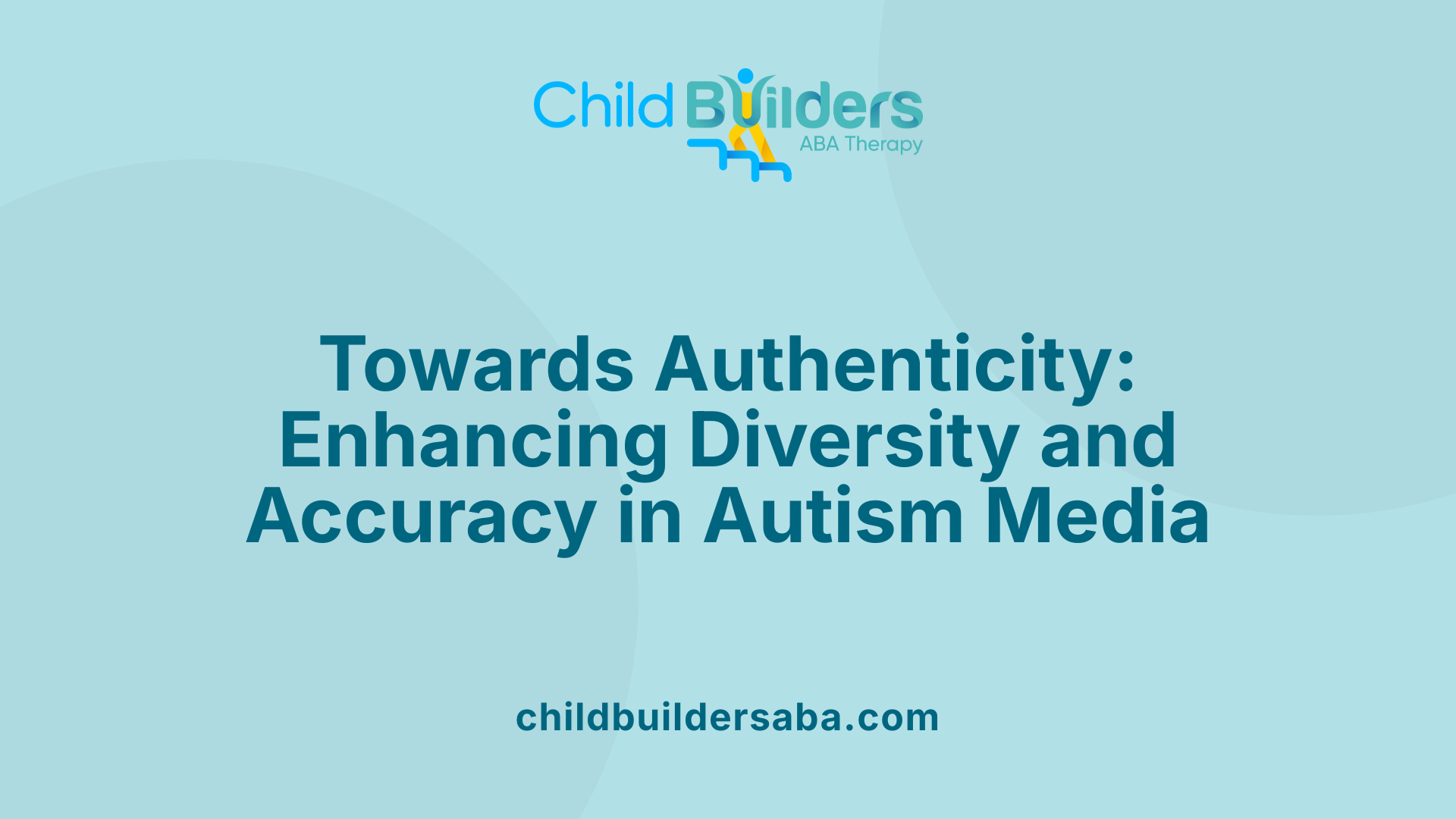Book, Movie, and TV Characters on the Autism Spectrum

Understanding Autism through Media Portrayals
Media representations of autism in books, movies, and television are powerful tools that influence societal perceptions, foster empathy, and shape the way autistic individuals are viewed in culture. From stereotypical depictions to nuanced portrayals, these characters provide insights into the diverse experiences of those on the spectrum. This article explores notable characters, their traits, accuracy, impact, resources, and ongoing challenges in representing autism authentically.
Notable Media Characters Depicted as on the Autism Spectrum

What are some notable examples of autistic characters in literature, film, and television?
Autistic characters have been depicted across a variety of media, from literature and film to television series. These portrayals serve not only to entertain but also to educate the public about the diverse experiences of individuals on the autism spectrum.
In literature, Raymond "Ray" Babbitt from the film and play "Rain Man" remains one of the most iconic characters representing autism. His depiction emphasizes traits like social difficulties, exceptional savant skills, and unique mannerisms, making him a strong example of early stereotypical portrayals. Another notable figure is Temple Grandin, a real-life autism advocate and scientist, who was brought to the screen in her biopic. The film highlights her life, highlighting her unique perspectives and achievements, providing an authentic and inspiring portrayal of a person with autism.
Television series have contributed many prominent characters. Sheldon Cooper from "The Big Bang Theory" is frequently discussed as a high-functioning autistic character, exemplifying traits such as intense focus, social awkwardness, and quirky behavior. Though often portrayed with humor, some critics argue that certain aspects lean toward stereotypes.
In "The Good Doctor," Dr. Shaun Murphy is portrayed as a talented surgeon with autism and savant abilities. His character is designed to promote a positive view of autistic individuals, emphasizing strengths as well as challenges, but some critiques note that he still fits within the high-functioning stereotype.
Other influential characters include Abed Nadir from "Community," who demonstrates traits like echolalia, difficulty coping with change, and a deep passion for pop culture. His character showcases the diversity within autism, emphasizing that individuals can have rich, meaningful lives despite their differences.
From children’s programming, Julia from "Sesame Street" holds particular significance as the first autistic character in the show's history. She helps teach young children about autism, fostering empathy and understanding.
While these portrayals vary from stereotypical to more nuanced depictions, recent efforts in media increasingly attempt to reflect the wide spectrum of autistic experiences. Nonetheless, many characters still rely on clichés, which can reinforce misconceptions rather than promote understanding.
In summary, notable autistic characters in media serve important educational and representational roles. Traditional characters like Rain Man's Raymond bolster awareness, while modern characters like Shaun Murphy and Abed Nadir help portray autism's complexity. The ongoing challenge remains to balance authenticity and accessibility to foster a more inclusive understanding of neurodiversity.
Traits and Characteristics of Autism in Media

What traits and characteristics of autism are typically depicted in media characters?
Media portrayals of characters with autism often focus on specific traits that highlight the spectrum’s diversity. Commonly depicted characteristics include difficulties with social interactions, such as challenges in understanding or responding to social cues and forming relationships. Characters may also exhibit communication challenges, including delayed speech, limited expressive language, or reliance on echolalia — repeating words or phrases.
A notable feature in many portrayals is a preference for routines and sameness. Characters tend to seek predictability to manage anxiety or sensory overload, and they often show strong adherence to specific daily habits. This focus on routines can be depicted vividly, highlighting the comfort that structure provides.
Autistic characters frequently demonstrate intense focus or passion for particular interests or hobbies. These interests are sometimes portrayed as highly specialized or even obsessive, with characters engaging deeply in areas like science, art, or fantasy worlds. Some portrayals include savant-like abilities, such as exceptional memory or calculation skills, illustrating extraordinary talents alongside more typical challenges.
Sensory sensitivities are also commonly featured, with characters reacting to loud noises, bright lights, or certain textures with discomfort or distress. These sensitivities contribute to the challenges faced in navigating daily environments, adding depth to their personalities and struggles.
Recent media efforts have leaned towards more nuanced representations, depicting a wider array of autistic experiences rather than relying on stereotypes. For instance, characters like Sam from 'Atypical' or Dr. Shaun Murphy from 'The Good Doctor' showcase positive traits and skills, illustrating that autistic individuals can excel in various domains.
Nonetheless, portrayals vary in accuracy. Some still lean on stereotypes, such as depicting autistic characters as solely social burdens or as lacking agency. Awareness is growing within the media industry to improve authenticity by involving autistic consultants and actors, which is helping create more credible and diverse characters.
In summary, existing media representations encompass a broad spectrum of traits: social and communication difficulties, preference for routines, intense interests, and sensory sensitivities. The trend is moving toward balanced portrayals that respect the complexity of autism, emphasizing strengths and individuality alongside challenges.
Evolution and Diversity in Autism Media Portrayals

How accurate and diverse are media representations of autism?
Media portrayals of autism have markedly evolved over time, transitioning from exaggerated stereotypes to more authentic and nuanced depictions. In the past, characters like Raymond Babbitt in 'Rain Man' were shown as savants with extraordinary abilities, reinforcing a narrow view of autism. Today, there is a growing effort to depict autistic individuals with greater diversity and complexity.
While some series and films continue to rely on stereotypical traits—such as portraying autistic characters as socially awkward, hyper-focused, or with exaggerated behaviors—many productions now include characters that reflect a broader range of experiences. For example, Dr. Shaun Murphy in 'The Good Doctor' embodies traits like commitment to his profession and social challenges but is portrayed with depth and dignity. In 'Atypical', Sam Gardner is depicted as an ordinary teen navigating daily challenges, emphasizing personal growth.
Authentic representations often feature autistic actors or consult with autistic individuals to ensure credibility. Shows like 'Sesame Street' introduced Julia, the first autistic character on the program, aiming to foster understanding among children. Similarly, 'Love on the Spectrum' offers real-life stories of autistic adults, showcasing the diversity within the spectrum.
Despite improvements, gaps remain. A significant portion of media still depicts autism primarily through the lens of white, male characters with high-functioning traits or savant skills. This limited scope underrepresents the vast diversity of the spectrum, which includes varied cultural backgrounds, genders, ages, and levels of support needs.
The scholarly collection Autism in Film and Television critically examines these portrayals, noting the tendency to foreground 'brilliant, quirky autists' while often neglecting the broader experience. Moreover, portrayals tend to focus on challenges or deficits, sometimes reinforcing stigma.
Exposure to these media representations influences how society perceives autism. Positive portrayals can foster empathy and understanding, helping to dispel myths. Research indicates that viewing media characters with autism can enhance traits like acceptance and reduce bias, although these portrayals don't always translate into a full understanding of the neurodiverse community.
In summary, while media representations of autism are becoming more accurate and diverse, significant room for growth remains. Greater inclusion of varied voices and stories is essential to portray the full spectrum's richness, aiding both public education and the acceptance of autistic individuals in society.
| Media Type | Examples | Diversity & Accuracy Highlights |
|---|---|---|
| Films | 'Rain Man', 'Life Animated', 'Phantom Thread' | Range from stereotypes to nuanced, with recent focus on authenticity |
| TV Series | 'Atypical', 'Love on the Spectrum', 'Sherlock', 'The Good Doctor' | More authentic, inclusive, portraying real-life stories and varied traits |
| Books | 'The Curious Incident', 'Mockingbird', 'House Rules' | Offer insights into different autistic experiences, with aimed empathy |
Continued efforts are necessary to broaden representation and deepen authenticity in autism portrayals across all media, fostering a more inclusive understanding of the neurodiversity spectrum.
The Cultural and Social Impact of Autism Portrayals
What is the cultural and social impact of autism portrayals in media?
Media representations of autism have a profound influence on how society perceives and understands the condition. Authentic portrayals can educate audiences about the diversity and true complexity of autistic individuals, helping to promote awareness and foster empathy. When created with input from autistic people and experts, these depictions challenge common stereotypes and contribute to a more nuanced picture.
However, many portrayals still rely on stereotypical images, such as autistic characters being savants or socially isolated, which do not reflect the typical experiences of most autistic individuals. For example, movies like 'Rain Man' focus on extraordinary abilities, which can distort public understanding by emphasizing extreme cases. This can lead to misconceptions, and sometimes, societal biases.
Negative representations can reinforce harmful stereotypes, leading to discrimination and misunderstandings. Such portrayals not only impact public attitudes but can also affect how autistic people see themselves. When media show limited or one-dimensional images, it often diminishes self-esteem and can create feelings of alienation.
On the positive side, increasing the diversity of autistic characters in media, especially with genuine involvement from autistic creators, helps promote acceptance. Shows like 'Atypical' and 'Love on the Spectrum' highlight positive and varied experiences, making it easier for viewers to understand the spectrum's breadth.
Responsible media portrayals have the power to shape societal attitudes by emphasizing neurodiversity—the idea that neurological differences are part of natural human variation—rather than focusing solely on deficits or exceptional talents. Educating the public about the wide range of abilities and challenges faced by autistic individuals encourages more inclusive attitudes.
Overall, media plays a crucial role in either reinforcing stereotypes or fostering understanding. Promoting accurate, diverse, and respectful portrayals is essential for reducing stigma and supporting integration and acceptance of autistic people in society.
Media impact on autism perception, autism representation and societal attitudes, stereotypes in autism media
| Aspect | Positive Effects | Negative Effects | Recommendations |
|---|---|---|---|
| Public Perception | Educates on autism spectrum diversity | Reinforces stereotypes like savant skills | Increase authentic and diverse representations |
| Awareness & Understanding | Promotes empathy and inclusion | Simplifies complex experiences | Involve autistic individuals in media production |
| Self-Esteem of Autistic Individuals | Validation of different ways of being | Marginalization due to stereotypes | Develop respectful and nuanced portrayals |
| Societal Attitudes | Fosters acceptance and integration | Contributes to discrimination | Prioritize accuracy and authenticity in portrayal |
Understanding the influence of media on societal perceptions underscores the importance of responsible storytelling. It is vital that media creators recognize their role in shaping societal attitudes and strive for portrayals that reflect the real lives of autistic people, balancing representation with authenticity.
Resources and Titles Featuring Autism in Media
Autism is a diverse spectrum, and media representations are crucial in shaping public understanding and fostering acceptance. A variety of films, TV shows, books, and documentaries have explored autism from different angles, offering both fictional and real-life insights.
Films that depict autism have long been part of cinematic history. Notable titles like Rain Man (1988) introduced many to the world of autism, showcasing Raymond's savant abilities and social struggles. More recent films such as Temple Grandin (2010) portray the life and achievements of Temple Grandin, an autistic woman who became a pioneering scientist. These films involve autistic individuals in the filmmaking process to enhance authenticity.
Television series like Atypical and The Good Doctor have furthered nuanced portrayals. Atypical follows the journey of Sam Gardner, an 18-year-old on the autism spectrum navigating high school and adult life. Efforts to include autistic actors and writers lend credibility to these stories. The Good Doctor features Dr. Shaun Murphy, a talented surgeon with autism and savant traits, emphasizing positive and complex representations.
Children’s programs play a vital role in early education. Sesame Street introduced Julia, the first autistic character, to teach children about autism in a relatable and positive way. Similarly, Pixar’s short film Loop portrays a young autistic boy navigating a disagreement with a new friend, promoting understanding through storytelling.
Books and written resources offer in-depth perspectives. Works by renowned autistic authors like Temple Grandin and Naoki Higashida provide authentic insights into living with autism. Titles such as Sincerely, Your Autistic Child and The Reason I Jump help families and educators foster empathy and support with age-appropriate content for preschoolers, children, teens, and adults.
Documentaries like Intelligent Lives and The Reason I Jump delve into the lives, challenges, and strengths of autistic individuals, offering real-world perspectives that challenge stereotypes and highlight neurodiversity.
Authentic narratives and autistic-authored works are vital for accurate representation. Including autistic individuals in storytelling not only enhances credibility but also ensures that their voices and experiences are accurately portrayed. This is evident in productions like Love on the Spectrum and First Impressions, which showcase genuine experiences and diverse portrayals.
To find these resources, search queries such as "movies and books featuring autism," "autism resources," "autistic-authored media," and "autism documentaries" can lead to a broad spectrum of educational tools, artistic expressions, and personal stories. These media serve an important role in education, acceptance, and empowerment.
Below is a summary table highlighting some notable titles across different media:
| Media Type | Title | Description | Focus | Audience |
|---|---|---|---|---|
| Film | Rain Man | Celebrates an autistic savant's life | Autism spectrum, savant skills | General audiences |
| Film | Temple Grandin | Life story of a autistic scientist | Autism, achievement | Adults, students |
| TV | Atypical | Follows a teen with autism | Coming of age, social skills | Teens, families |
| TV | The Good Doctor | Autistic surgeon’s career | Medical, autism traits | Adults |
| Children's TV | Sesame Street’s Julia | Promotes autism awareness | Early childhood | Preschool |
| Documentary | The Reason I Jump | Based on autistic experiences | Life on the spectrum | General public |
By engaging with these diverse media, audiences gain a richer understanding of autism, emphasizing strengths and individuality while dismantling stereotypes.
Progress, Challenges, and Future Directions in Autism Media Representation

What progress, challenges, and issues exist regarding authentic autism representation in popular culture?
Recent years have seen notable progress in how autism is portrayed in movies, TV shows, and books. Media examples like "Love on the Spectrum" and Pixar's "Loop" highlight a move toward more nuanced and authentic depictions. These portrayals include characters with diverse abilities, interests, and challenges, offering audiences a broader understanding of what it means to be on the autism spectrum.
However, significant challenges remain. Many media still rely on stereotypes, such as emphasizing savant skills or portraying autism in a way that makes characters seem "inhuman" or overly quirky. Often, there is a focus on high-support individuals, which does not reflect the full range of experiences across the spectrum.
Another obstacle is the lack of diversity in representation. Most stories tend to feature male, white characters with high support needs, limiting the visibility of autistic individuals from different racial, socioeconomic, and gender identities.
Media influence on society’s understanding of autism is complex. While exposure to authentic portrayals can promote greater acceptance and understanding, many portrayals do not significantly improve factual knowledge about autism. Instead, they mainly impact attitudes positively, especially when autistic storytellers are involved.
Efforts to improve representation continue, emphasizing the importance of involving autistic voices in all stages of media creation. Such participation helps ensure stories are realistic and respectful, moving away from stereotypes and towards authentic narratives.
In summary, the path forward involves both celebrating advances and addressing ongoing issues. Promoting diversity, inclusion, and autistic input in storytelling is essential to fostering more accurate, respectful, and comprehensive portrayals of autistic individuals in popular culture.
Moving Toward Authenticity and Inclusion in Media
The portrayal of autism in books, films, and TV has evolved considerably, shifting from stereotypes to more authentic, nuanced representations. By involving autistic voices in storytelling and promoting diversity in characters and narratives, media can play a vital role in fostering understanding, acceptance, and social change. Continued efforts to challenge stereotypes and emphasize neurodiversity will help ensure that portrayals truly reflect the diverse realities of autistic individuals, ultimately broadening societal perspectives and supporting a more inclusive culture.
References
- Book, Movie, and TV Characters on the Autism Spectrum
- Books with Characters on the Autism Spectrum
- 10 TV Characters With Autism Spectrum Disorder
- Autism in Film and Television - University of Texas Press
- 10 Iconic Fictional Characters That Have Autism - The Brain Workshop
- Representation of autism in fictional media: A systematic review of ...
- Autistic-coded TV and film characters - thewyrdsisters.co.uk
- Representation of autism in fictional media: A systematic review of ...
- Top 36 Movies and TV Shows Featuring Autism






.jpg)






























































































